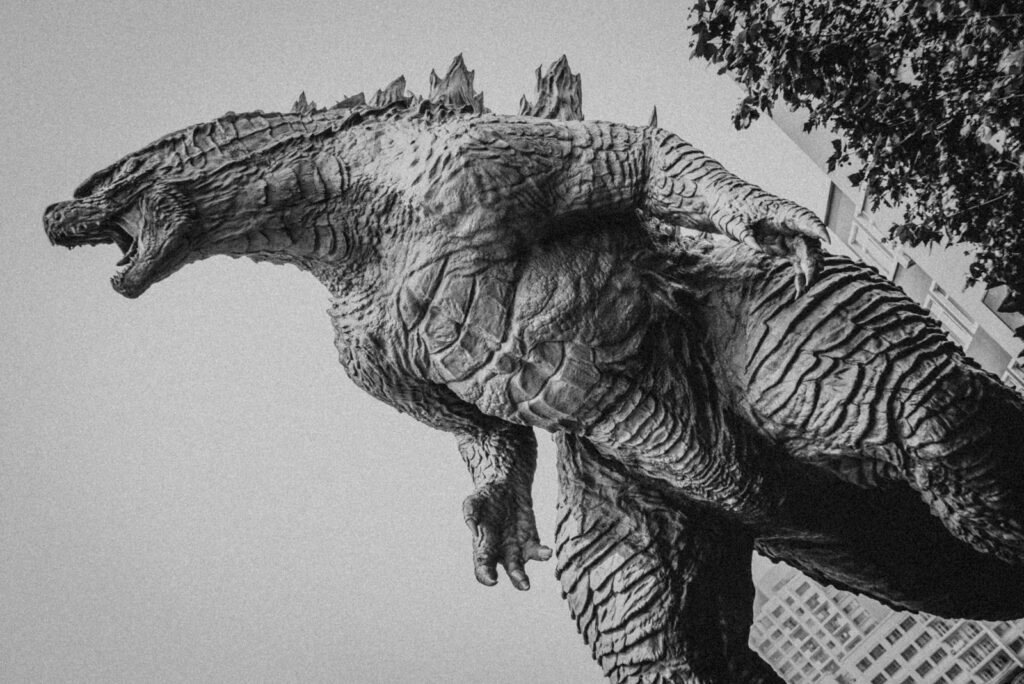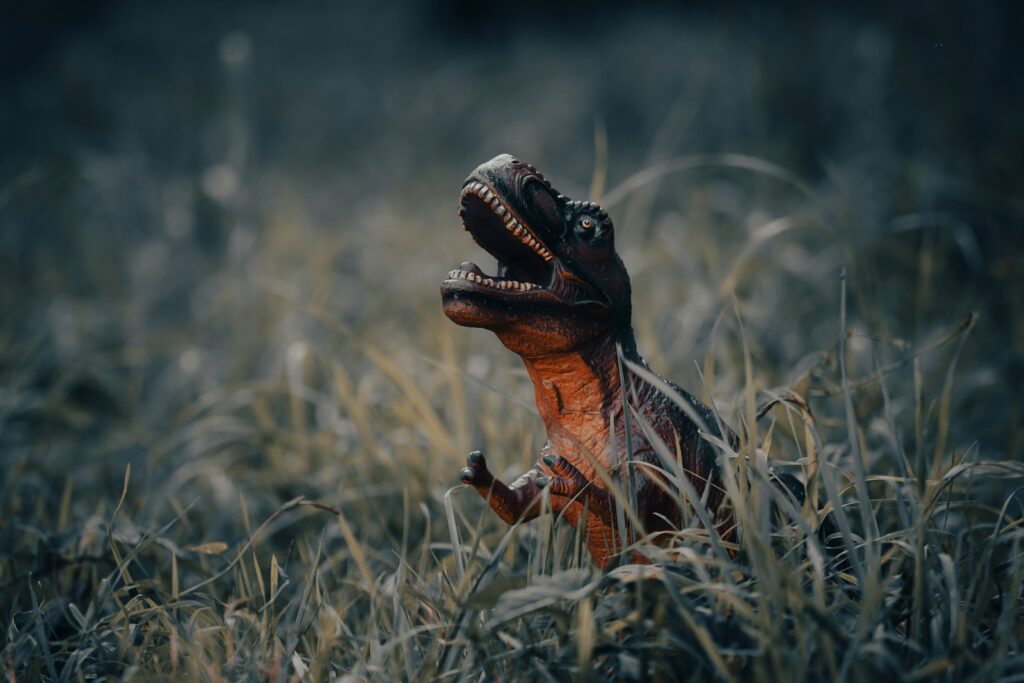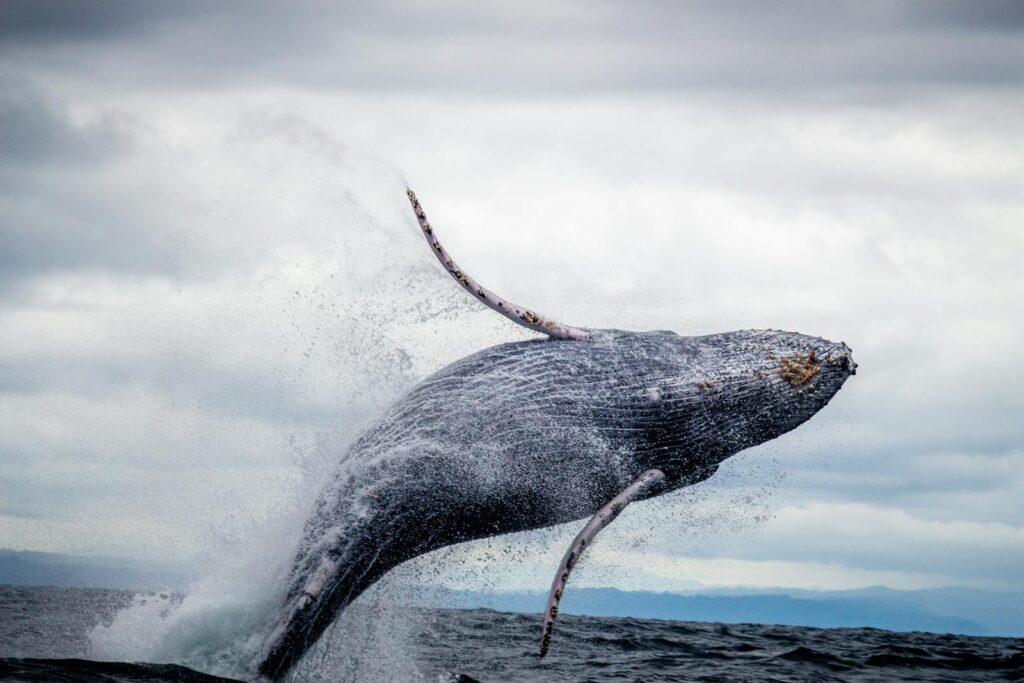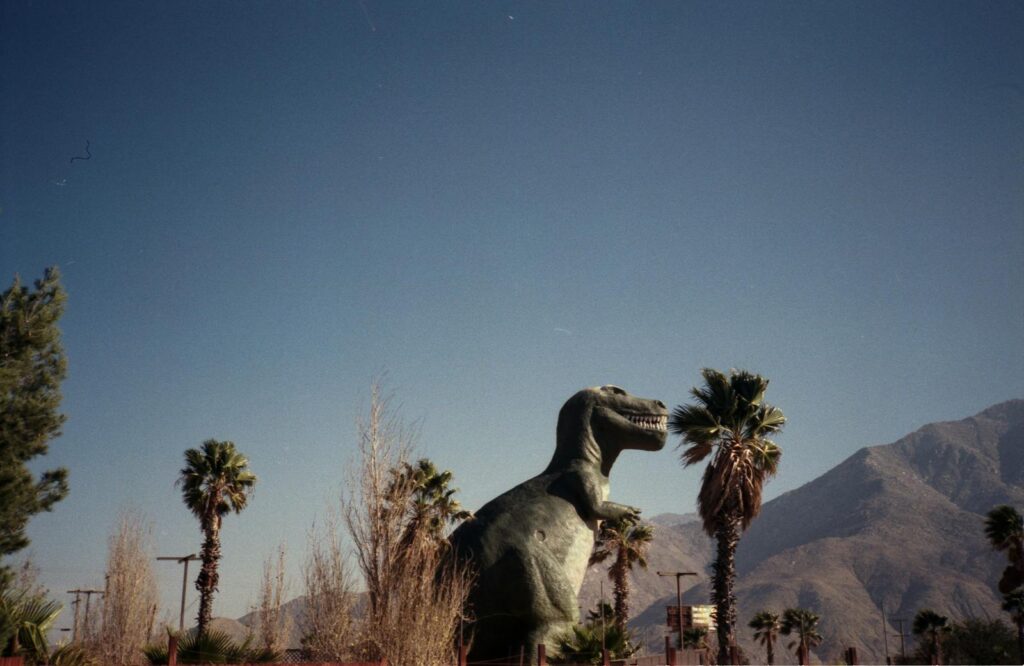Approximately 66 million years ago, a catastrophic asteroid impact near Mexico’s Yucatán Peninsula triggered the fifth mass extinction event in Earth’s history, wiping out roughly 75% of all species—including the non-avian dinosaurs that had dominated terrestrial ecosystems for over 160 million years. This cataclysmic event dramatically altered evolution’s trajectory, allowing mammals to diversify and eventually giving rise to human civilization.
But what if that asteroid had missed Earth entirely? What alternative evolutionary pathways might have unfolded if dinosaurs had continued to thrive and adapt? This fascinating counterfactual scenario has captivated paleontologists, evolutionary biologists, and science fiction enthusiasts alike, offering a thought-provoking glimpse into an Earth that might have been.
The Catastrophic K-Pg Extinction Event

The Cretaceous-Paleogene (K-Pg) extinction event marked one of the most dramatic turning points in Earth’s biological history. When the Chicxulub impactor—a celestial body approximately 10-15 kilometers in diameter—struck Earth, it released energy equivalent to billions of atomic bombs, triggering tsunamis, wildfires, and ejecting massive amounts of debris into the atmosphere. This debris blocked sunlight for months or years, creating a prolonged “impact winter” that collapsed food chains and ecosystems worldwide.
While small, adaptable mammals could survive on seeds and insects in burrows, the larger dinosaurs had nowhere to hide and insufficient food sources to sustain them through this catastrophic period. Understanding this extinction event provides crucial context for imagining how dinosaurs might have continued evolving had this cosmic disaster never occurred.
Dinosaur Evolution Already in Progress

Contrary to popular misconception, dinosaurs weren’t evolutionary failures or stagnant organisms when extinction struck—they were highly successful, diverse, and still actively evolving. Recent fossil discoveries reveal that many dinosaur lineages were experimenting with new body plans, diets, and ecological niches right up until the asteroid impact. Theropods (predatory dinosaurs) were developing increasingly sophisticated sensory abilities and potentially greater intelligence.
Hadrosaurs had evolved complex dental batteries for processing plant material with unprecedented efficiency. Some dinosaur groups had already begun developing primitive feathers and other proto-avian features. Evidence suggests that dinosaurs were not somehow “destined” for extinction but were innovating and adapting to changing environments just as they had for over 160 million years—a trajectory that likely would have continued absent the cosmic intervention.
The Rise of Intelligent Dinosaurs?

One of the most intriguing possibilities in a dinosaur-dominated alternate timeline is the potential evolution of advanced intelligence. Several theropod dinosaur lineages, particularly the dromaeosaurids (including Velociraptor) and troodontids, possessed relatively large brain-to-body-mass ratios comparable to some modern birds. These dinosaurs showed evidence of binocular vision, enhanced sensory processing, and complex social behaviors—all prerequisites for higher cognitive development. Given additional millions of years of evolution, these already-intelligent theropods might have developed brainpower rivaling or exceeding that of primates.
Paleontologist Dale Russell famously speculated about the “Dinosauroid”—a hypothetical descendant of Troodon that might have evolved humanoid characteristics, including enlarged cranial capacity, manipulative digits, and even language capabilities. While modern paleontologists generally reject the specifically humanoid aspects of this thought experiment, the basic premise that dinosaurs might have evolved advanced intelligence remains plausible.
Mammalian Suppression and Ecological Niches

In our familiar evolutionary history, mammals remained relatively small and ecologically constrained for over 150 million years while dinosaurs dominated terrestrial ecosystems. Only after the dinosaur extinction did mammals explosively diversify into the myriad forms we know today. In an alternate timeline without the K-Pg extinction event, mammals would likely have remained limited to nocturnal, burrowing, or other specialized niches that didn’t directly compete with dinosaur dominance. The largest mammals might have remained raccoon-sized at best, never developing into the large herbivores or apex predators that emerged in our timeline.
Primates specifically might never have evolved beyond small, tree-dwelling insectivores, as the ecological pressures that drove their brain development and eventual tool use would have been drastically different in a world still ruled by dinosaurs. This mammalian suppression represents one of the most significant divergences between our actual evolutionary history and this hypothetical alternative.
Continued Avian Dinosaur Diversification

While non-avian dinosaurs went extinct, their avian descendants—birds—survived the K-Pg extinction and thrived afterward. In a timeline where the extinction never happened, the boundary between “bird” and “non-bird” dinosaurs would likely have remained much more blurred, with a continuous spectrum of forms rather than the distinct separation we observe today. Flying dinosaurs would have continued diversifying, potentially developing even greater variety than modern birds.
We might have seen the evolution of massive predatory birds far larger than any flying bird in our timeline, as they wouldn’t have faced competition from mammals like bats. Flightless dinosaur-birds might have reevolved into diverse terrestrial forms, creating a bewildering array of creatures that would appear to us as hybrids between familiar birds and more traditional dinosaurs. The avian respiratory system—already more efficient than mammalian lungs—might have enabled ever more spectacular evolutionary innovations across this diverse dinosaur lineage.
Geographic Isolation and Dinosaur Endemism

The breakup of Pangaea and the resulting continental drift would have created fascinating patterns of dinosaur diversification through geographic isolation. Just as Australia’s separation led to the unique evolution of marsupials in our timeline, isolated continents in a dinosaur-dominated world would have developed highly endemic dinosaur faunas with specialized adaptations. South America might have evolved unique predatory dinosaurs unlike anything seen elsewhere.
Australia could have become home to bizarre monotreme-like dinosaurs adapting to its distinctive environments. Antarctica, which remained forested and ice-free until relatively recently in geological terms, might have harbored cold-adapted dinosaur species with specialized insulation and metabolic adaptations. These isolated evolutionary laboratories would have produced remarkable diversity among dinosaur lineages, creating distinct biogeographical provinces across the globe with highly specialized dinosaur communities adapted to local conditions.
Dinosaur Adaptation to Climate Change

Even without the asteroid impact, Earth’s climate continued changing throughout the late Cretaceous and into what would have been the Cenozoic Era. Global temperatures were gradually cooling from the extreme greenhouse conditions of the mid-Cretaceous, with increasing seasonality and the spread of more temperate ecosystems. Dinosaurs would have faced significant adaptive challenges as these habitats transformed. We might have seen the evolution of cold-adapted dinosaurs with insulating feathers or even fur-like structures becoming more prevalent.
Hibernation or migration strategies might have developed among large dinosaur herbivores needing to cope with seasonal food scarcity. The eventual Pleistocene ice ages would have presented extreme challenges, potentially driving dinosaurs toward developing behavioral innovations like cooperative hunting, complex social structures, or even primitive technological solutions to environmental problems. These adaptations might have accelerated cognitive development in certain lineages, creating selection pressures for increased intelligence.
Marine Dinosaur Possibilities

Throughout dinosaur evolutionary history, various lineages returned to aquatic environments—most notably the ichthyosaurs, plesiosaurs, and mosasaurs (though these were reptiles rather than true dinosaurs). In a continued dinosaur timeline, we might have seen true dinosaurs make the transition back to fully aquatic lifestyles, paralleling how mammals evolved into whales in our timeline. Certain theropod groups already showed adaptations for fish-catching and semi-aquatic lifestyles; given millions of additional years, some might have evolved flippers, streamlined bodies, and eventually fully marine adaptations.
These hypothetical “whale dinosaurs” might have developed sonar, complex social structures, and intelligence comparable to cetaceans. The oceans might have been dominated by giant marine dinosaurs rather than the whales and other marine mammals that evolved to fill these niches in our timeline, creating fundamentally different marine ecosystems structured around dinosaurian apex predators and filter feeders.
Technological Dinosaur Civilizations?

The most speculative—yet fascinating question in this alternate evolutionary scenario is whether dinosaurs might have eventually developed technology and civilization. If certain theropod lineages continued developing greater intelligence, manual dexterity, and social complexity, the basic prerequisites for technological development might have emerged. However, critical differences from the primate path to technology would have existed. Fire mastery might have been particularly challenging for dinosaurs lacking the primate advantage of forward-facing eyes that can safely observe flames up close. Tool use might have followed radically different patterns based on dinosaurian anatomy.
A dinosaur civilization would likely have emphasized different resources and technologies than human society, perhaps developing biological technologies leveraging their deeper connection to the living world rather than following our mechanical-industrial pathway. The cognitive architecture of an intelligent dinosaur would differ fundamentally from human cognition, potentially creating alien perspectives and different approaches to problem-solving that would make dinosaur civilization virtually unrecognizable to human sensibilities.
Flowering Plant and Dinosaur Coevolution

Flowering plants (angiosperms) had just begun their rise to dominance during the late Cretaceous, fundamentally transforming terrestrial ecosystems. In a continued dinosaur timeline, the coevolution between dinosaurs and flowering plants would have continued along fascinating trajectories. We might have seen the evolution of dinosaur pollinators analogous to hummingbirds but at much larger scales—perhaps medium-sized feathered dinosaurs specializing in pollinating massive flowering trees.
Fruit-eating dinosaurs would have driven seed dispersal adaptations different from those evolved for mammal consumption in our timeline. Plant defense mechanisms might have developed specifically to deter dinosaur herbivores, creating entirely different chemical ecology patterns. Plant-dinosaur relationships might have reached remarkable levels of specialization, with certain plant species evolving to be pollinated or dispersed only by specific dinosaur species, creating intricate ecological webs of interdependence across global ecosystems fundamentally different from the plant-mammal relationships that dominate our world.
Absence of Human Evolution

Perhaps the most profound implication of continued dinosaur dominance would be the almost certain absence of human evolution. The specific evolutionary pathway that led to Homo sapiens depended on a precise sequence of conditions that would never have materialized in a dinosaur-dominated world. Without the ecological release provided by the dinosaur extinction, primates would never have evolved beyond small, tree-dwelling creatures. The African savannas where early hominids evolved bipedalism would still have been populated by dinosaur herbivores and predators rather than mammals.
The climate fluctuations that drove hominin adaptations would have acted on dinosaur evolution instead. Even if some dinosaur lineage had evolved intelligence comparable to or exceeding human levels, their fundamentally different neurological architecture, sensory systems, and physical capabilities would have created a consciousness and worldview utterly alien to human experience. This alternate Earth might have developed intelligent life, but nothing remotely human would ever have walked its surface.
Parallel Evolutionary Patterns

Despite the radical differences between a dinosaur-dominated Earth and our mammal-dominated one, certain evolutionary patterns might have recurred due to convergent evolution—the tendency for unrelated organisms to develop similar adaptations in response to similar environmental challenges. We might have seen dinosaurs evolve analogues to many familiar mammalian forms: grazing ceratopsians filling ecological roles similar to bison or elephants; small, burrowing theropods convergent with rodents; gliding or flying forms resembling bats; even marine dinosaurs with adaptations paralleling dolphins or whales.
These parallels would likely have extended to behavioral and social adaptations as well, with complex social structures, parental care, and territorial behaviors evolving along broadly similar lines despite being expressed through dramatically different anatomical structures. This phenomenon of convergent evolution suggests that while the specific organisms would differ dramatically, certain ecological and behavioral patterns might appear somewhat familiar even in this radically alternate biosphere.
The Alternate Earth’s Appearance Today

If we could somehow visit this alternate Earth where dinosaurs never went extinct, we would find a world both familiar in its physical geography yet utterly alien in its biology. The continents would occupy roughly the same positions as in our timeline, but they would be populated by bewildering dinosaurian megafauna rather than the mammals we know. Vast herds of ceratopsians or hadrosaurs might thunder across grasslands where bison or wildebeest roam in our world.
Towering theropod predators might stalk landscapes where big cats or wolves evolved in our timeline. The skies would be filled with pterosaurs and avian dinosaurs of all sizes, from tiny insectivores to massive aerial predators with wingspans dwarfing any modern bird. Forests might be patrolled by intelligent, pack-hunting dromaeosaurids rather than wolves. The oceans would teem with marine reptiles and dinosaurs instead of whales and dolphins.
Even the plants would appear somewhat different, having coevolved with dinosaur herbivores rather than mammals. This alternate Earth would be a spectacular reminder of evolution’s contingent nature—how profoundly different our world might have been had a single cosmic event not redirected life’s trajectory 66 million years ago.
Conclusion

The captivating thought experiment of dinosaurs continuing their evolutionary journey invites us to appreciate the profound role of contingency in evolutionary history. Had the Chicxulub asteroid missed Earth by a cosmic hairsbreadth, we might not exist to contemplate the question at all. Instead, Earth might now host intelligent dinosaur descendants contemplating their own evolutionary history and perhaps imagining a world where they had gone extinct and strange, furry creatures had inherited the planet.
Such alternate evolutionary scenarios highlight that there was nothing inevitable about mammals’ rise to dominance or humans’ eventual emergence. Our existence stems from a complex chain of chance events and adaptive responses that could easily have followed innumerable different paths. This humbling perspective reminds us that we occupy just one branch on life’s vast evolutionary tree—a branch that sprouted only because another was unexpectedly pruned by cosmic chance 66 million years ago.




